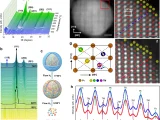
First hydrogen-electric Zero-Emission Helicopter Flight
August 18, 2025A Historic Zero-Emission Flight in Bromont
Back on March 27, 2025, at Roland-Désourdy Airport in Bromont, Quebec, Unither Bioelectronics and Robinson Helicopter pulled off something pretty special: the first crewed flight of a hydrogen-electric Robinson R44. For just over three minutes, the chopper hovered smoothly, running 90% of its juice through Proton Exchange Membrane (PEM) fuel cells with a backup battery handling the heavy lifts. It was a vivid showcase of zero-emission technology—no carbon in sight, just pure innovation.
Under the Hood: Hydrogen Fuel Cell System
Here’s the scoop: the powertrain blends two PEM fuel cells with a compact battery pack. Hydrogen gas feeds the cells, sparking an electrochemical reaction that spits out electricity and nothing more than water vapor. A Magnix electric motor then converts that current into torque, spinning the main rotor. During hover, the cells keep you cruising, and the battery steps in when you need that extra kick—for instance, a quick climb or sharp maneuver.
You’ve seen hydrogen on cars and small planes, but bolting it onto a certified helicopter frame? That’s next-level engineering. Weight balance, thermal management, and flight-cert standards posed big challenges. Under Project Proticity, Unither and Robinson reworked the R44’s structure to fit hydrogen tanks, hydrogen storage lines, and power electronics—without compromising its rock-solid safety record.
Business Lift-Off: Medical Logistics & Strategic Implications
If you know United Therapeutics (Unither’s parent), you know they revolutionize organ-transplant logistics. Getting life-saving tissues to hospitals fast can mean the difference between life and death. A hydrogen-electric chopper could slash “door-to-door” times in gridlocked cities or remote outposts—all while slashing emissions. Talk about a game-changer.
Strategically, this demonstration sends ripples across biotech and aerospace. For Unither, it proves sustainable energy can be sewn right into healthcare. For Robinson, it’s a golden ticket to offer an emission-free version of their top seller. Investors and policymakers focused on industrial decarbonization are all eyes and ears—zero-emission rotorcraft might soon join electric trucks and hydrogen trains on the fast track to net-zero targets.
Regulatory and Infrastructure Lift: Challenges Ahead
Of course, flying a proof-of-concept is one thing; running a fleet day in, day out is another. You need airtight safety protocols around hydrogen storage—think high-pressure cylinders—and regulators must adapt certification frameworks for these fresh propulsion systems. Then there’s refueling: most airports don’t have the hydrogen infrastructure to handle either compressed or liquid hydrogen, and building it out isn’t cheap.
Today’s R44 retrofit packs hydrogen at 350 bar in baggage-compartment cylinders. Down the road, the plan is to tuck liquid tanks under the cockpit floor to nail center-of-gravity and boost payload. That’ll mean tackling cryogenics—insulation, boil-off control, stricter handling rules. Policymakers will need to refresh safety standards, and industry players will have to pool resources and share the risk.
A Blueprint for Zero-Emission Aviation
This brief hover over Bromont stands on decades of work in zero-emission technology. In the 2020s, hydrogen fuel cells steadily won hearts in cars and small planes. Now they’re dipping their toes in rotorcraft waters—territory long owned by gas engines. If this scales, we could see fleets of hydrogen-electric helicopters patrolling coasts, servicing offshore platforms, guiding tourists, or rushing to emergency scenes.
By zeroing in on medical logistics, Unither and Robinson set a gold standard for reliability—you don’t cut corners when lives are at stake. If they can replicate these results, you can bet other sectors will follow suit. Trimming aviation’s carbon footprint while supercharging mission-critical operations feels like a true turning point for sustainable energy adoption.
Looking Ahead: Liquid Hydrogen and Certification
The next big leap is swapping compressed gas for liquid hydrogen tanks to stretch endurance beyond that three-minute mark. The target? At least 30 minutes in the air—enough for longer organ runs or offshore inspections. Meanwhile, Unither Bioelectronics and Robinson Helicopter are plotting a certification pathway with Transport Canada, the FAA, and EASA. Nail down the safety protocols and infrastructure requirements, and we could see commercial service by the late 2020s.
About Unither Bioelectronics
A subsidiary of United Therapeutics, Unither Bioelectronics focuses on revolutionizing medical logistics. Through Project Proticity, it’s retrofitting helicopters with hydrogen-electric powertrains, charting a course toward truly zero-emission technology in healthcare aviation.



 With over 15 years of reporting hydrogen news, we are your premier source for the latest updates and insights in hydrogen and renewable energy.
With over 15 years of reporting hydrogen news, we are your premier source for the latest updates and insights in hydrogen and renewable energy.